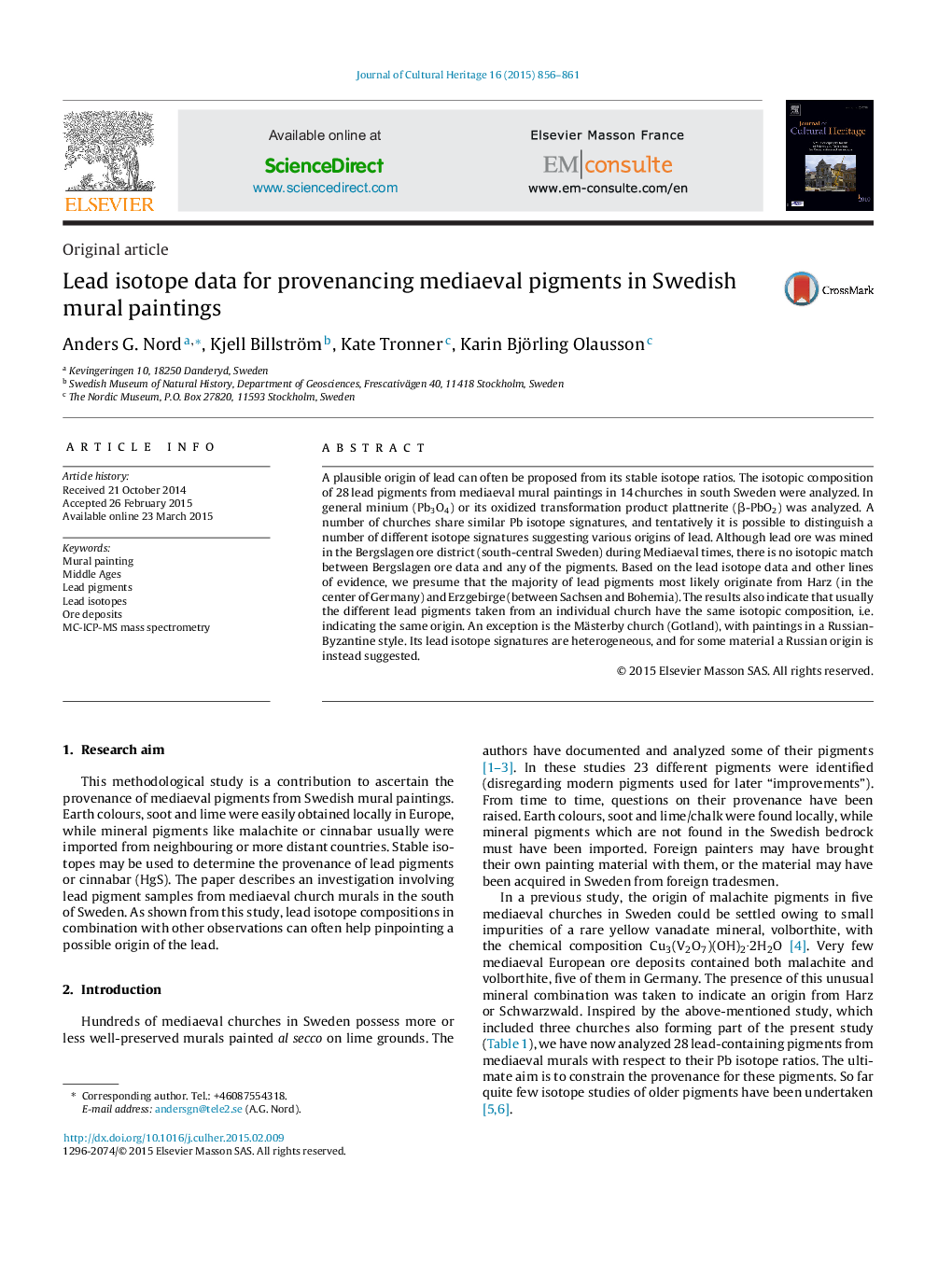| Article ID | Journal | Published Year | Pages | File Type |
|---|---|---|---|---|
| 1037972 | Journal of Cultural Heritage | 2015 | 6 Pages |
A plausible origin of lead can often be proposed from its stable isotope ratios. The isotopic composition of 28 lead pigments from mediaeval mural paintings in 14 churches in south Sweden were analyzed. In general minium (Pb3O4) or its oxidized transformation product plattnerite (β-PbO2) was analyzed. A number of churches share similar Pb isotope signatures, and tentatively it is possible to distinguish a number of different isotope signatures suggesting various origins of lead. Although lead ore was mined in the Bergslagen ore district (south-central Sweden) during Mediaeval times, there is no isotopic match between Bergslagen ore data and any of the pigments. Based on the lead isotope data and other lines of evidence, we presume that the majority of lead pigments most likely originate from Harz (in the center of Germany) and Erzgebirge (between Sachsen and Bohemia). The results also indicate that usually the different lead pigments taken from an individual church have the same isotopic composition, i.e. indicating the same origin. An exception is the Mästerby church (Gotland), with paintings in a Russian-Byzantine style. Its lead isotope signatures are heterogeneous, and for some material a Russian origin is instead suggested.
